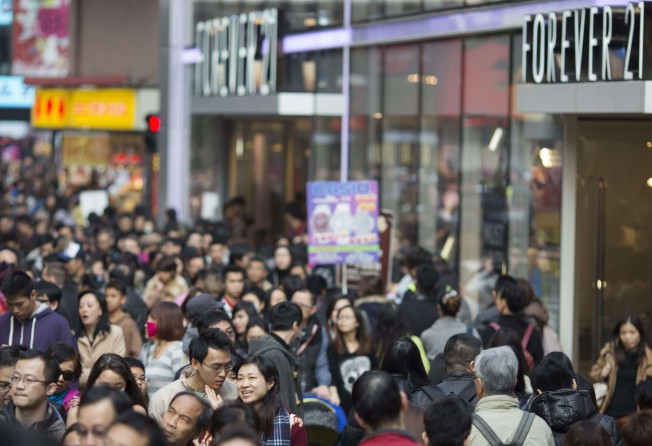More than half of Hongkongers denied enough space for recreation, think tank says
Civic Exchange urges government to develop more plots to ensure everyone benefits from new target

More than half of Hong Kong’s population does not enjoy the amount of recreational space specified in the government’s latest development blueprint, a think tank says.
Civic Exchange found that those living in Mong Kok were restricted to just a fifth of the proposed space.
It called on the authorities to identify plots that could be quickly developed into quality recreational spaces and to allocate more funding.
According to government guidelines, the standard for provision of open space in urban areas is a minimum of two square metres per person. A new blueprint for housing and economic development beyond 2030 unveiled by planning authorities last year suggested increasing this to 2.5 square metres.
While official statistics in 2012 showed that Hong Kong met the current and 2030 targets with 2.7 square metres of open space per person, Carine Lai Man-yin, a researcher at Civic Exchange, said the actual situation was more complicated.
Highlighting the unevenness in distribution of open space, Lai said her study, which looked at 57 out of 69 urban outline zoning plan areas – or local neighbourhoods – found that 20 had less than two square metres of open space. Those areas accounted for 27 per cent of the urban population, or around 1.84 million people.
When compared with the 2030 target, the number rose to 30 neighbourhoods, around 3.9 million or 58 per cent of the urban population.
Topping the list of neighbourhoods with lowest open space per capita was Mong Kok, with only 0.6 square metres. Wan Chai and Cheung Sha Wan were also in the top 10.
Lai urged the government to review land that had been zoned for open space to develop more recreational areas and suggested setting up a HK$2 billion fund for such projects.
There is a lengthy application process for developing open spaces into recreational facilities. Many such areas are also used as temporary container storage areas or vehicle depots.
Lai said about 1,116 hectares of land had been zoned for open space on outline zoning plans but had not been developed, an area equivalent to 52 per cent of Hong Kong’s existing open space.
She highlighted three areas – the Central District Extension and North Wan Chai, the West Kowloon Cultural District and Kai Tak.
“The government needs to ensure that when it [develops] open spaces in these areas, they are very high quality and are very easily accessible to people living nearby in the surrounding areas on foot so that they can relieve some of the pressure in the crowded areas [nearby].”
Lai also urged the government to discard the idea of rezoning land designated for open space for housing.
Wan Chai district councillor Cheng Ki-kin said many residents had complained to him about the lack of open space for recreation.
He hoped the government could allocate more such space in its development of the promenade of the New Wan Chai Ferry Pier.